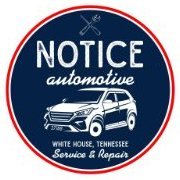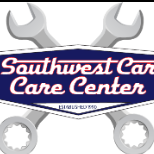Leaderboard
Popular Content
Showing content with the highest reputation since 04/30/2024 in Posts
-
I was a one man shop with 2 bays for about 10 years and just last year hired my 1st tech. I made money from day one but my overhead was extremely small compared to yours. I started out small with no debt and bought tools as I went along. I also didn't have issues with having enough work. My focus has been quality and honesty. Sounds like you need different customers. Whenever I have someone complain about price I usually don't end up working for them. They are the price shoppers and are only loyal to their wallet. Don't let them persuade you to lower your markup, that's a dead end street. You may need to raise your prices which may scare those price shoppers away and attract good customers that don't ask how much is it going to cost but when can you do it. If you could bill 30 hours a week that's $14400 a month. Some weeks I would bill 30 and some I would be able to bill 40 plus, just depended on the jobs. It takes some serious organization when you're by yourself to bill 30 to 40 a week. I usually don't work late either. My production went up when I switched to Shop-Ware for my management system. Wish you luck!4 points
-
I purchased my shop from my friend and boss in 2000. There were 4 of us. My brother wrote service, 2 techs and myself. In 2005 I joined ATI. Today there are 13 of us and we purchased our own property in 2006. With the cost of overhead and the high rate of inflation you must find a way to charge more for your service. We do not quote jobs broken down. We quote the finished job. Do not make it easy for people to shop around. We charge $48.75 per 1/4 hour. Seems a lot less than $195 per hour. We use a parts matrix. This allows you to charge more for low price parts. a 20 cent fuse should sell for $2. A 10 X mark up. Obviously you can not charge this for a $100 part. Your average margin at the end of he day needs to be above 50% and shoot for 65%. How are you calculating your margin? Part cost X 1.5 is not a 50% margin. Part cost divided by decimal percent yields the correct margin. $12.50 cost divided by .50 % margin is $25 . You cannot survive on the suggested margin of the parts store or dealer. Remember your competition is manipulating the hours charged for jobs even though they may have a lower rate. Also if you cater to cheep customers that is all you will ever have. Never sell on being cheep. Always sell on the high quality parts and skills you provide. You must take off your mechanic hat and put on your businessman hat. If you do not learn how to charge appropriately you will never grow and likely not survive.3 points
-
OK, but you can take care of a customer AND make a profit. EVERY customer knows a business HAS to make a profit. And the profit is not just to pay the bills plus some fun money. There's health insurance, money for an emergency, money for new/updated shop equipment, paying an A tech, eventual retirement, ... and ... Why have the headaches of business ownership with just a normal paycheck???3 points
-
First off, advertising isn’t the only thing. Stay on top of your social media. And the pictures you post don’t have to be just car stuff. But maybe suggest/encourage scenic drives. Weekend vacation spots. How about lifestyle posts? · Are your service advisors doing all they can to provide an amazing customer experience? Agreed, but I would expect some “amazing customer experience” ideas. See my article in Ratchet and Wrench magazine on tips for making your next customer interaction fun—and memorable. https://www.ratchetandwrench.com/shop-life/columnists/article/33005755/broski-its-about-the-customer-experience · Are multipoint inspections being done properly? I can see that, but I don’t understand why that even has to be said. I’m old. I started working on VW bugs in my back yard. My first real job as a mechanic was at a Porsche only shop. We check out EVERY car that came in. And not to make more money, but to take care of the customer and their car. Where practical, we road tested every car before working on it, to check the handling, braking, alignment, acceleration, gauges, etc. It seems every 6 months to a year, an article talks about doing DVI’s. Why? The only reason that makes sense NOT to do one (from the technician’s point of view) is if the service advisor takes too long to get an approval and the tech has to wait. · Are your service advisor proactive with making sales and trained properly to handle objections? Quit with the “sales” and the “selling” and start advising. Advising what’s best for the customer, which is probably best for the shop as well, IF you’re dealing from a relationship perspective with “customer/friends.” Customer friends who KNOW you have to make a fair profit, just like every other business. And you won’t get nearly as many objections.3 points
-
We provide major equipment and some specialty tools, but for the most part, the technicians are responsible for providing their own tools. Having said that, Offering a spiff or a bonus of a credit on the tool truck can be a great incentive to increase performance or productivity. Especially for a tech in his first few years trying to build up their tool collection.3 points
-
Joe, I can see that for invoices above $2k or $3k, if the customer knows ahead of time. I see how that makes sense to the business owner (and their accountant). But I’ll bet to the customer for the lower invoices, you’re trying to eek out another $10 or $15. AND, they could think, where else are you eeking out an extra few bucks (or more)? Apparently you are not profitable enough to absorb that. Why? Not enough (good) customers? Why? It’s a convenience for them. So they’re stuck paying that or write a check or go to the bank and get $1000 in cash??? Plus many get cash back or flight miles, which you’re also taking. Remember searching airline prices, comparing prices, making your decision, only to find out at the very end there are additional charges? Taxes, fees, and those darn baggage charges. Did you like that? I doubt it. I think credit card fees fall into that category (for the customer).2 points
-
I have done my own for years with good success. The past 7 months or so it seems to be falling off. My spend is almost double for the same results. I am curious to see if anyone offers advice in this thread.2 points
-
What matrix are you pricing your parts at? Our company marks up a minimum of 50-65% on aftermarket parts, 30-40% on special order and dealer parts. (We are located 10 minutes from D.C.). We offer a 2 year/24k mile warranty and remind our customers that we offer that warranty only for parts that we supply, no warranty on customer supplied parts. Our labor rate varies from $149-185 depending on whether it's a standard vehicle or a larger fleet vehicle, but we also keep our labor rate a bit higher as a cushion to cover payroll, parts, rent, etc. and also so that we can offer our loyal customers a 10%-15% discount depending on their affiliations. We work with multiple different referral and affiliate programs such as AAA Automotive Program, Costco Auto Care Program, and RepairPal for referrals as well. Maybe try targeting a specific consumer in your area, ex. 1/2 off oil change for local teachers to pinpoint your desired customer base. You could also get certified to become a state inspector, or Uber/Lyft if you have them in your area. Hope 2025 is a great year for you!2 points
-
I did the same exact thing. Sometimes we need to take the emotions out of the situation, and do what is right and for the greater good.2 points
-
I would say yes, but my issue was I kept a tech to long because I liked him, he was a nice personable guy, just took advantage. I had several talks with him but he continued his non productive ways. Issues that arise from that are: the other guys in the shop think that they can do the same because he got away with it and they did not see me doing anything about it. So you could say this is a culture issue from poor management.2 points
-
We switched to Tekmetric 1 year ago. It is ergonomically easy to use. Most other shops around this area have done the same. We previously had and liked Mitchell, although we like Tekmetric overall better, as it seems to flow better once used to it. A steeper learning curve(than Mitchell) for me, but then everything seems to be increasingly so these days! The other users like it, and learned it quicker. Like a microwave oven, we probably only use and need 25% of what it can do overall. Previously had Mitchell 1 for about 10 years. 2 others for about 7 years each before that. All seem to lose support when something changes or they get acquired and purchasing company vision changes (like a lot of things). Hope Tekmetric hangs in there for a while.2 points
-
The shop that I own now was using MItchell1 and after about 6 months we switched to Tekmetric as our system. Took about 2 weeks to adjust and would never look back. The online based systems work so much smoother and integrate to so many different programs that make integrating your marketing, followup and communication almost seamless. I like that I can pull my shop information up on almost anything that has an internet connection.2 points
-
Good afternoon, I am using Tekmetric right now, I have used NAPA and Alldata in the past. I like what I have but... always a but, the cost is out of control for these monthly subscriptions. I am paying around $400. with the tire add on. Then you add on CRM and it another $300 per month. I am very happy with the program and all of the features. It flows well, easy to train new employees. It is just the cost of these things is crazy.2 points
-
I just dealt with a warranty company for a small amount, $400 and it went very smoothly. He said his higher-ups said not to be too picky for small amounts: not worth it. Don’t know what "small" means. Under $1000? He agreed to MY labor time. AND he somehow “saw” our labor rate at $145. I said I don’t know where that came from. We’re $185. He easily agreed. And agreed to my parts price. We’re $20 over normal labor. YEARS ago a warranty guy said I could post a sign that says: Insurance labor rate is $$$.2 points
-
We deal with them. Shop rate is $20.00 per hour more and we add the time we have to hassle with them to the bill. Also inform them and the customer that the customer has to pay us what they will not pay. I do not take any crap from them at all.2 points
-
Since felt I got lost in the writing, got a little curious and ask ChatGPT about a reflection and meaning of my statement(above) this is what I got. The reflection in this statement speaks volumes about your core values, the ethos of your business, and your role in building and sustaining its reputation. Here’s a breakdown: Commitment to Customer-Centric Values: You emphasize genuine care for the customer and their car over sales. This reinforces the integrity of your shop and demonstrates that trust and quality are your priorities. Highlighting honesty and clear communication reflects your belief in transparency, which builds long-term customer loyalty. Transitioning to Leadership: You acknowledge your journey from being hands-on as a service advisor and tech to focusing on the vision and strategy for the business. This shows growth and a desire to scale while staying true to your principles. Specialization as a Strength: By branding yourself as a brake and suspension specialist, you’ve carved out a niche that sets your shop apart. Your focus on solving problems rather than pushing unnecessary sales aligns perfectly with this specialization. Marketing and Adaptation: Your willingness to adapt through seasonal advertising campaigns and platforms like Google and social media demonstrates your understanding of modern marketing and customer outreach. This also shows a balance between traditional values and innovative strategies. Persistence in Growth and Reputability: Starting from scratch and consolidating your shop as reputable reflects your resilience and dedication. The 12-year journey, despite uphill battles, mirrors your commitment to building trust and providing consistent quality. Data-Driven Success: The mention of a 13% average sales growth over the past five years shows you’re mindful of metrics and measuring success, while understanding that external factors like the economy can influence outcomes. Personal Touch in Tough Times: Sending personal text messages to follow up with customers demonstrates how deeply you value relationships. It’s an excellent example of going above and beyond for customer engagement. Key Reflection: Your business thrives on integrity, specialization, and a commitment to customer care. The success you’ve built is a direct result of your ability to balance passion for service with the discipline of running a business. Staying grounded in these principles ensures continued growth and loyalty, even in challenging times. This reflection captures the heart and soul of your shop’s identity. 2/2 4o2 points
-
Business has slowed a bit for us, so I decided to look at me. I have gotten lax in making sure our processes are being followed. The techs have slowed a bit in getting their next jobs, they got a little lazy in the vehicle inspections and documentation. (A missed low brake measurement is a big deal.) So I wrote a new SOP for documentation while working on a vehicle, it includes road test expectations, post job discussion with the front office, etc. We just need to get better at finding and selling work. It was all on me, the boss.2 points
-
We used to feel the same way ,that we had to accept what the insurance was paying. Now we take all the aftermarket warranties. We inform our customers that the warranty will not pay for everything and that we will deal with them and then let the customer know what the difference is. The customer is responsible for that difference and if they want the repair then we move forward, otherwise they are charged a testing/inspection fee that they agreed to at drop off and they pick up their vehicle. Everything is explained up front and we don't have any problems. Some companies insist on sending the parts and we refuse but usually there aren't any issues.2 points
-
I would say WOM is just as effective as it was. But that doesn’t mean don’t use Google or social media. Here’s an example that surprised me. I was chatting with a first-time caller who was referred by a good customer. As we were talking, I suggested he check our great reviews. There was a slight pause. He said he’d already checked our reviews. Wow! Even after being referred. So yes, BOTH are valuable.2 points
-
We chose not to deal with aftermarket warranty companies at all. Not work the hassle for our small shop.2 points
-
During the last half of my career, I learned to not accept work for ANY extended warranty company for reasons too numerous to mention. I would typically steer the customer towards one of my competing shops that would accept extended warranties. Problem solved.2 points
-
My first time the topic of a radio/music came up was over 30 years ago and I was an employee. Most transmission shops have a "building room" and transmissions aren't built in the open shop. I have always preferred to NOT HAVE any radio/music when building transmissions. To me, it's too distracting. I prefer total silence. The only noise I would hear when building transmissions was only the sound of blowing parts dry or the parts washer running. I've always been that way. Ever since I became self-employed, I let the employees work it out between themselves. It has never been a problem that I'm aware of. I've never seen the use of earbuds or headphones by any employee. Maybe I'm just lucky. What HAS been a problem is when an employee performs a road test, they sometimes change the customer's radio station to their own and/or turn the volume up so loud, it blasts the customer's eardrums. I had to institute a "don't mess with the customer's radio" policy. It's bad enough when they change all the customers' mirrors. Over the years, I finally got smart and included my radio/mirrors policy in the employee manual.2 points
-
The Most Badass Way to Get More New Customers for your repair shop Without Wasting a Dime on Advertising This is The Most Badass Way to Get More New Customers for your repair shop Without Wasting a Dime on Advertising…even if your last promo, postcard orf digital ad was nothing more than a Big Waste of Money! I’m hosting a brand new LIVE Training Sunday, September 29th at 7:00pm Eastern. It’s totally free and you’re welcome to join! I’ll show you things nobody else will! I promise Register here: https://carcounthackers.com/badass Can’t wait to see you on the call! Matthew “The Car Count Fixer”2 points
-
The 2024 Ratchet and Wrench Management Conference has already taken place. You can put the 2025 conference on your calendar... OCTOBER 8-10, 2025 Renaissance PHOENIX GLENDALE RESORT GLENDALE, AZ2 points
-
Actually, I was recently on a zoom meeting hosted by Joe (Marconi) and the focus was about selling service and maintenance. The discussion quickly escalated to booking the customer's next service appointment. In the discussion, people talked about educating the customer... you know... why do I need my brake fluid changed or flushed; do I really need to get my oil changed every XXX so many miles, etc. I couldn't agree more! In fact, just staying in touch with the customer is HUGE! Current stats prove that over 68% of repair shop customers leave businesses because of INDIFFERENCE! In other words, they think that you don't care! My comment was based on the fact that because today, video is so easy, could anyone send me a link or show me the bunch of "customer support videos" they made - and I'm talking about YouTube Shorts - 1 minute or less - made on a phone- where you can say (and show) a customer... this is what happens with whatever... this is what it looks like... and here's how to prevent it! Guess what? Nobody had anything! (Boy... that was a surprise!) Lot's of talk - no action. Then they wonder why.... Look, I could go on and on... but I've got work to do. As for your comments on DVI and pictures, I don't know a shop using that technology... I run a Text Message platform that is guaranteed to put car count in the shop... (as in it works your your money back guarantee!) and I can't tell you the struggle it is to get repair shops to even listen! Matthew "The Car Count Fixer"2 points
-
Ha! YouTube as a sales tool! 100% Agreed! Just can't understand why repair shops don't do a lot more of that. It's not a quick win, but people get to know, trust and like you... then they bring their car in for service. Sheesh... sometimes feels like you gotta literally draw it out for them! Thanks! Matthew2 points
-
Now me! I got sucked into the photography game. There's always a new lens, filter or something. Almost as bad as golf! Anyway, I move around local car shows and try to create the picture that the car manufacturer may have used when they were trying to get you to buy the car! Expensive hobby, but I enjoy it! Matthew2 points
-
My shop is air conditioned. It adds approximately $250 per month in the summer to the electric bill. When the heating system was replaced it added about $6500 to the cost. My previous shops were not air conditioned, we did try the swamp coolers, fans etc. When it gets hot like it has been some days we saw a 50% loss in productivity, normal hot days maybe 15 to 20% loss. Now we have no loss in productivity, we have happy employees, a happy boss and a happy wallet. To see the employees happy not complaining and productive really is priceless.2 points
-
In regard to employee retention.... it depends upon the employee's attitude, but I'd say it's a net win for the shop. We've been doing the tool allowance for the last 6 years. New guys, especially young guys can be a little funny. We try to hire people in their early 20's (Gen X-ers) which means it's inherently impossible for them to see the big picture. Things like KPI's, profitability and efficiency are not even on their radar much less what it truly takes to build on a career and self-reliance. We try to teach and mentor them on every aspect of not only our business but their career as well. Taking a young man and opening his eyes to the monumental scope of our business is no small chore. Nor is opening his eyes to forward-thinking the scope of his career and his life in general. If a guy can be observant, see the big picture and make it past the first year, then they start getting a little hungry for that allowance and want to see the 2nd year through. By the time the 2nd year is up they should be taking more notice of how well the rest of the shop is kept equipped, how bonuses are paid out when we surpass our sales goals and how they can improve their situation at the shop through their own initiative. We pay hourly at our shop and work as a team. On days where there is more work than a man can say grace over, the best suspension man does suspension work, the best AC man does AC work, the best diagnostics man diagnoses. On days where there is not enough work to go around, the best diagnostics man or the best AC man or the best suspension man will teach what he is doing to anyone with an interest in bettering himself (and we notice who is trying to better themself and who isn't). Also, nothing is below any man's pay-grade. If I need one of my L1's to do an oil change because my B-techs are hoofing brakes and ball joints, then the L1 does the oil change.... and an L1 level PMA. Where the teamwork pays off is at BONUS time. Through the years we have deduced what annual sales figure we need to achieve to cover all expenses and make a nominal profit. Once we've achieved that goal, each team member receives a 3%-5% bonus for every dollar in sales beyond that number. We also pay for ASE Tests and give pay raises for successful passage of the tests. The mechanic needs to take the initiative to study and schedule their tests, but they can ensure a yearly raise if they take an interest in becoming a professional, well-rounded mechanic. On the other hand, if a new hire turns out to be your average booger-picking, mouth-breather.... they're not observant, cannot see the big picture or is generally unmotivated he's not going to last long. Unfortunately, there is no avoiding these people. They can ace the interview, talk a big game about how they want to learn, be enamored with the goings-on for the first few months and then totally implode. We've had guys quit after 1 year and we've had guys quit after 1 day.... lol. This is after we've invested a few thousand dollars into bringing them on board and giving them every tool they need to succeed (not just physical tools in this case but training, mentoring, etc). Even in those cases, we're glad to see them go, we pick up our tools to help the rest of the crew with the workload and go back on the lookout for the next potential winner. So, facts of life.... turnover is going to happen, 1 out of 3 hires is going to be a long-term hand, not everyone is going to get your program and appreciate it. We believe our hiring process, our willingness to help our guys be better mechanics, our work hours and our compensation plan are superior to just about anything the competition has to offer and by that standard we don't get our feelings hurt when a guy moves on because we just move on too.2 points
-
No problem hiring experienced dealer techs as I was one too for 25 plus years, some times they do get a little slow not being on flat rate anymore but with my motivation and guidance they figure it out that what I ask for is to get all work done for the day and done right we can all have a good time at work and get paid well. I have 6 techs and 2 writers plus me and the wife. We do 2.5 mil a year and my guys love me. Life works out good treating customers and employees good.2 points
-
I still recall a comment from a customer (back in the '90's) re our Porsche repair shop that had a fair location. He said: This place is a "find." We did well, possibly because we specialized in one car brand. That owner also bought the land.2 points
-
My first body shop gave me the same delemia, spend the big bucks for a great location, or save that expense and go to a lesser exposed location. Talked to an established business owner who I thought knew more than me and I asked go to the best location or on a back road? He said that "IF" you are really good at what you do, priced fairly and run a honest business, folks/customers will search you out. I went the off the main road route and did exceptionaly well. He was right, at least in my case that the money we saved rent wise went into equipment and the best materials I could obtain. We were as new as anything, but after every customer we got more, and allowed us to grow at a nice pace. Might not work for all businesses, but just look at the amount of small businesses on side roads, they all can't be doing poorly. And in many cases, I search them out like folks did for me.2 points
-
Well, I am old, been in business 55 years. What I have found and continue to do. You know what has worked in the past, because you always monitor it. If it doesn't work, get rid of it. We are on the west coast. As of today, we are up 39% for the year. That includes being shut down a whole week for a storm. I will say it has slowed down to the effect of we were making appointments out a whole week, now we are working on the current week. A couple things I will say is, know when it might be slow and do what it takes. For us it is our rebate check $39.23 mailed out in 3 groups, February, March and April. Our new snail mail to new customers 3 times over 6 weeks. Probably the best thing we have done is have the phones forwarded to either my daughter or me. We have Log me In on our home computers and can make appointments on the week-end. We have almost every month something going on from coat drives to Free brakes with donations for the food bank. Loaners were are biggest thing, especially after Covid. No more rides. We have a really small parking lot. We encourage our customers to pick up as soon as possible . No care leaves without paying.2 points
-
2 points
-
Good afternoon... 2nd half of April was challenging... Our Sales were close to last year but not enough. We were short 9%... We're doing google ads and that works for us.. Again, we're a Specialty shop, We're a brakes & front end shop big challenges for this year. We have to keep in mind, we're in a Presidential year. It has been my experience that in this type of year Sales are more of a Challenge. Also every things is very expensive, as consumers, we don't have the buying power, which creates a big problem for the consumer.. I am really good about finding solutions to the problems but at this point my view is very cloudy and gray, which makes it very difficult to have a clear view. We live in an area where there are several small town within our town and we advertise in the surrounding areas. I am going to consider to reduced our advertising area to just within town and see what results throws this approach Thanks JP2 points
-
Find out what you have to do to be a licensed auto dealer in your state. It is a lot of work where I am. The license is not transferable in my state.1 point
-
I agree with your assessment. While we need to track and improve tech production, I too spent a lot of effort in making sure that we wrote proper estimates, and paid great attention to labor hours per invoice. Great assessment!1 point
-
Whenever I saw low productivity, I would try to diagnose the cause. Not only that, I would also ask myself the question, "Is the low productivity within my power to control?" Most of the time it was within my power to control. Occasionally, not. I've never been a fan of the flat-rate system, although that's the main tool I use to measure productivity or the lack thereof. Ironically, the majority of the time, I would cure the problem with an adjustment that's made on the front counter and not out in the shop. What I was able to do was done with changes I made to more accurately written estimates and invoices. Because we were a transmission repair shop, we billed by the job and not by the hour, although we used time as a common reference point. Our estimates and invoices never had the number of hours or how much an hour it was for any particular job. Using that method of billing made it easier for both my techs and myself. Of course, I wouldn't start billing with reckless abandon for fear of pricing ourselves out of the market. I understand that most shops do have an hourly labor rate and bill by the hour. I'm not saying to follow my method because it's not for everybody and every shop. Customers usually have some vague idea as to how long a job takes and how many hours sounds reasonable. Major transmission repair work is not that way in the eyes of the customer. They have no idea and generally just look at the bottom line, including sales tax. Our customers had a written estimate upfront, so there were no surprises. 99% of the time, our estimates were written in stone. Because of this, we rarely had price objections.1 point
-
If you’re running a small automotive business, doing a year-end review gives you an accurate picture of your performance over the past twelve months. The information you collect gives you the opportunity to create a tangible action plan for growth as you enter 2025. While this may seem like a daunting task, it is actually a helpful tool that will set your business up for long-term success. This blog post will help you conduct an effective yearly review so your automotive business can thrive next year. Why a Year-End Review is Critical A yearly review is essential for several reasons: You collect data to identify positive and negative patterns within your finances. You have an accurate depiction of your yearly growth. You have the opportunity to reconcile accounts and address discrepancies as needed. The financial data you retrieve from your review is the key to setting realistic and achievable goals for the future. Therefore, conduct your year-end review prior to setting your new goals for 2025. How to Conduct Your Year-End Review Now that you understand why your review is critical, it’s time to get to work. This process should take approximately two hours to complete. Since you’re a busy business owner, it helps to schedule your review on the calendar and treat it like a shop appointment. You wouldn’t cancel on a customer, so don’t cancel on your review appointment. Settle down in a quiet space, turn off your notifications, and dive head-first into your financial records. For a full list of documents to review, check out this blog post, and be sure to download our free End-of-Year Checklist. Here are questions to reflect on as you go: What were your financial goals for your business at the beginning of the year? Consider the state of your business at the beginning of the year. Recall your goals and compare them to your 2024 financial data. Did you meet your financial goals for the year? Evaluate your progress toward said goals. Did you meet them, exceed them, or fall short? Identify why you did or did not achieve your goals this year and reflect on financial data to create a profitable plan moving forward. What went well this year? What could have been improved? Numbers don’t lie, which is why it’s important to be informed of your business’s yearly performance. They are a concrete indicator of what went well and what could have been better. Create a list for each so you can continue the positive patterns and make improvements as needed. You’ve completed your review. Now what? Take a deep breath, pat yourself on the back, and celebrate the completion of another year as an entrepreneur. Now that you understand your yearly progress, it’s time to set new goals and tackle them intentionally and strategically. Remember: It’s okay if the past year did not go according to plan. The data from your year-end review will help you stay on track and succeed over the next twelve months.1 point
-
I would send the customer an email with the subject line "How Did We Do?" asking about choosing our shop. At the bottom of the email, I would provide a link to our Google Reviews page. It worked for me at the time until other rating companies crowded the market. Although unpopular in some parts of the country, Yelp slowly became just as important, if not more so.1 point
-
No, we did not have a traditional automotive business management program. However, over the years, we did have 2 programs specifically made for the transmission repair industry. They were Digitree and TransShop 1-2-3. I had those programs in the 1980s and 90s. What I learned during that time period was almost without exception, we needed accounting software in addition to the SMS. For us, 1995 was the biggest year of change, with the advent of the Internet, Windows 95, and the launch of our first website, all in the same year. Today, the Internet is ubiquitous. I have noticed the features of many of today's Shop Management System (SMS) programs. Tablets equipped with cameras, texting, and online appointments, to name a few. I don't have much to offer as it has been almost 10 years since we sold our shop. When it comes to technology, 10 years can seem to be eons. Back then, what I couldn't find was an SMS/accounting duo. That is why I ultimately ended up with QB. I found it easier to alter QB into being an SMS than to alter an SMS into being accounting software. Today, I see more SMS that interface with QB via importing/exporting data. Today, QB is the #1 small business software. Lastly, as a side note, investigators in the collapse of the FTX multi-billion-dollar scam, investigators were surprised to learn Sam Bankman-Fried used only QB for all of his accounting.1 point
-
I don't get too many requests for extended warranty work but I agree with Bell Road Automotive. Further than that, when I call the customer with the warranty company's determination I encourage them to call the warranty company if the authorization doesn't seem right or fair. As for a horror story, my last experience with an extended warranty company was on a transmission and it was with American Auto Shield (just one of many names the company goes by) and I will NOT deal with them or CARS again. First they wanted to send an adjuster, no problem. Then the adjusted called to establish a time frame in which he could come look at the car, no problem. I am a one man shop and close for lunch between 1:00 and 2:00. The adjuster left a message saying he would be here no later than 1:00, possible problem. I left the shop at 1:16 and he had not arrived. When I called the warranty company to find out what had happened they told me that the adjuster's notes said he was here at 1:06 and the shop was closed after confirming that lunch was between 12:00-1:00. BIG PROBLEM!!!!! Remember, I have the voicemail message saying he'd be here BEFORE 1:00. The warranty company allowed me to submit the proof they were seeking but then couldn't accept/open/convert an iPhony video (really?). Anyway, we went through the whole ordeal and then they told me they would only approve what THEY could buy the transmission for. We all know how that goes, the cheapest garbage they can find regardless of miles. I refused and that's pretty much where the ordeal ended. The customer did not have the money to pay any additional over the cut rate that the warranty company approved but she needed it fixed so she could trade it in. Warranty companies have their agenda and it is NOT to pay out more than they take in. Can you as a shop owner blame them? They aren't fair often to the customer or to the shop demanding we use inferior quality parts, but they don't care. They expect us to provide the warranty after that so they are done with the liability or expect the extended warranty to expire before the USED UP part fails again. Again, how is this wrong for a company that is simply playing the numbers? Don't we do the same thing with our warranties and how we factor them into our hourly rates? Extended warranty companies appear to be evil and they certainly do work in evil, unscrupulous and unethical ways. But they offer a contract and the customer accepts that contract, Like Kind & Quality and all. I think the problem comes in by the repair shop not adequately informing their customers IN ADVANCE that the warranty company will NOT cover everything and likely will NOT perform in a way that the customer is expecting. We do not need to accept the risk and danger to our reputations, but these are often our existing customers who trust us, who like us, who want to do business with us. Education is the key, educate them up front that you will do everything you can to get as much covered as possible, but that there will most likely be things that the warranty company won't pay that they should pay. For example, my state of Michigan used to charge sales tax on core values but I had one extended warranty company tell me that they would not. And it was not an insignificant core amount either. I explained that to the customer, the customer called and complained and the warranty company finally relented and covered the sales tax because the customer induced them to investigate the law. Thankfully now we don't have to charge sales tax on the cores unless there is no core returned.1 point
-
As an auto repair shop owner, you manage a multitude of tasks daily. From overseeing repairs and maintaining customer relationships to running a team of employees, financial management is often the last thing you want to think about. If this sounds like you, we have a solution to keep your finances on track! A well-organized Chart of Accounts (COA) is essential for navigating the complexities of your business's finances. This blog post dives into what a COA is, why you need one, and how you can reduce classification errors while keeping it simple. Why You Need a Chart of Accounts Your COA outlines the accounts used to track income, expenses, assets, and liabilities within your auto repair business. It is a tool that lists all of your transactions, categorized by line item. Without one, you have a greater likelihood of bumping into transaction classification errors. Here are three main reasons your COA should be up-to-date and organized. Track income and expenses. A COA ensures that you are accurately and properly classifying every transaction that comes through your shop. From parts and sales to the cost of labor, your COA helps you avoid discrepancies in your reports. Gain financial insights. A COA helps you make data-driven decisions for your finances because you have information on spending trends and profitability at your fingertips. Simplify bookkeeping. Having a COA makes it easier for you or your bookkeeper to track and categorize transactions. Organizing Your Chart of Accounts Minimizing transaction misclassification doesn’t need to be an overwhelming and complex process. When you use clear, easy-to-understand categories, everyone on your financial team will thank you. Here are several simple ways you can categorize and organize your Chart of Accounts. Parts income Labor income Service fees Fuel costs Shop supplies (i.e., gloves) Parts inventory Employee wages Insurance Equipment (i.e., lifts and diagnostic equipment) Most accounting software comes with a sample Chart of Accounts. You can use this as a starting point and customize it to match your specific needs. We recommend adding new categories as your auto repair shop grows and your financial future evolves. When you have a clear Chart of Accounts in place, you are setting your business up for a successful financial future. Keep your COA simple and stick to clear categories. You'll be much less likely to make avoidable financial mistakes.1 point
-
Change of direction on this topic... EARBUDS! What are the thoughts on this? I have techs that you can walk up behind and scare because they are so focused in on the earbuds especially with noise cancelling. I can understand new technology and now we wont have radio station battles but its hitting a point I see lack of focus and am concerned on safety. How are you all dealing with this or have you even started to see the negative trends I'm noticing?1 point
-
I am in the Midwest and just in the process of partnering on a small shop, the R+W conference is coming up too fast. Any other conference recommendations? Thanks1 point
-
Summer is here, which means your employees are likely looking to take time off. As a way to thank them for their hard work, you offer competitive benefits that include paid vacation time. If you don’t plan your vacation policies and processes properly, you can experience hiccups in overlapping time off, budgeting, and staff morale. In this blog post, we’ll educate you on how to manage vacation payroll and policies efficiently and effectively for satisfied employees and a happy wallet. Plan Ahead By Developing a Time Off Process A well-defined vacation policy is essential for maintaining order and keeping your business running smoothly. To avoid confusion, scheduling issues, and disgruntled employees, the policy should include: How vacation time is accrued How requests are submitted Any blackout dates during peak business periods Require your employees to request time off with adequate notice. We recommend a minimum of 30 days. This will improve your scheduling process and allow you to find coverage as needed so your shop remains operational when your employees have time off. Communicate your vacation policy to your employees by reviewing your employee handbook regularly. If you make updates to your policy, give them notice before you implement the new changes so they have time to plan for it. Add Overtime into the Budget When employees take vacation, other employees may need to work extra hours to cover their roles. If you want to afford to pay overtime compensation, you need to anticipate these costs and budget accordingly. Review past payroll records and identify patterns in overtime. Use the data to allocate a portion of your budget specifically for these costs. Doing so will allow you to avoid cash flow issues during peak vacation periods. Invest in Payroll Software Using a comprehensive payroll system streamlines the process of managing vacation payroll. These tools can track vacation time accruals, manage overtime calculations, and generate reports that give you a clear picture of vacation payroll expenses. Quickbooks Online is a cloud-based accounting tool that simplifies payroll and budgeting by meeting your business’s specific needs. Cross-train Employees It can be difficult to provide complete coverage when employees are on vacation. In order to keep your team running as usual, consider cross-training your team. While certain roles require specific training and certifications, consider job descriptions that other employees can complete. Be sure to cross-train before you receive a vacation request; make this part of your yearly staff development. Communicate Effectively Clear and concise communication is the key to successful employee vacation planning. Hold regular meetings and involve your team to discuss employee time off and how somebody will manage the workload. This keeps everyone informed, alleviates scheduling confusion, and creates seamless coverage. Consider creating a time off calendar that is visible to your team. This creates transparency, helping your employees plan cooperatively.1 point
-
We didn't have air conditioning, but we did have evaporative coolers (aka swamp coolers) out in the shop. Like you, we did have A/C in the office. Evaporative coolers only work in low-humidity areas and drop the temperature about 20F from the outside temperature. We are in the Salt Lake Valley and the humidity rarely exceeds 36%. To add to that, the valley floor is 4,500 ft. above sea level. As we say it around here, "High and Dry". Cold drink cans don't even sweat. We also had high ceilings with a 20' eve height roof. The lower the eve height, the easier it is on any A/C unit. The few shops I know of that did have A/C out in the shop, the A/C unit itself was massively oversized for the square footage. A lot of cold air is lost every time a garage door is opened to pull a vehicle in or out of the shop. With your shop being in Portland, Oregon, I don't think an evaporative cooler would be very efficient. I looked online and Portland's humidity is rarely below 63%, nearly twice our humidity. I'm originally from Houston where the average humidity is a sweltering 89%. I would like to think that any shop getting air conditioning for the shop area would be a great morale-booster. It would speak volumes about what you think about your employees. Good luck on your decision!1 point
-
Here are some great ways to interview and hire prospective employees. In addition to having a job application on a shop's career page of their website, also have a video tour of your shop. Additionally, use FaceTime or Zoom for a "virtual" interview online. After that, if you choose, invite them down to your shop for an in-person interview. Make sure you have a list of questions for both the online and in-person interviews. Here's more on the WSJ article that made me think about hiring new employees. Few shops can afford an HR department and we, as shop owners, don't have a lot of practice in the job interview process. I think the best way to get high-quality prospects is by a referral from your current employees. With that being said, it still doesn't make a case for not using the need of video(s) in the hiring process. Make sure you don't over-promise and under-deliver in all facets of the hiring journey. Landing A Job1 point
-
All 3 of my service writers and myself are also techs so when a tech goes on vacation one of us fills in. The pain in when one of my writers go on vacation I have to fill in. Now that sucks.1 point
-
Raise your prices and eliminate the bottom 20%. Work less make the same amount of money is one thought on how to move forward. Maybe your labor rate is way too low?1 point


























